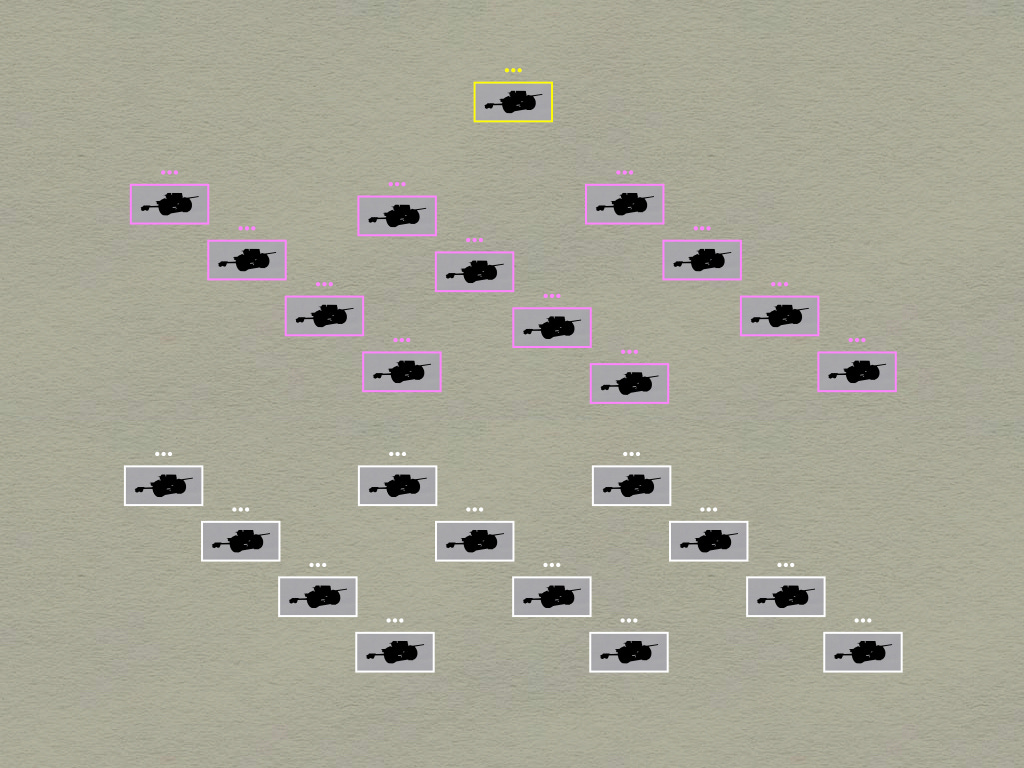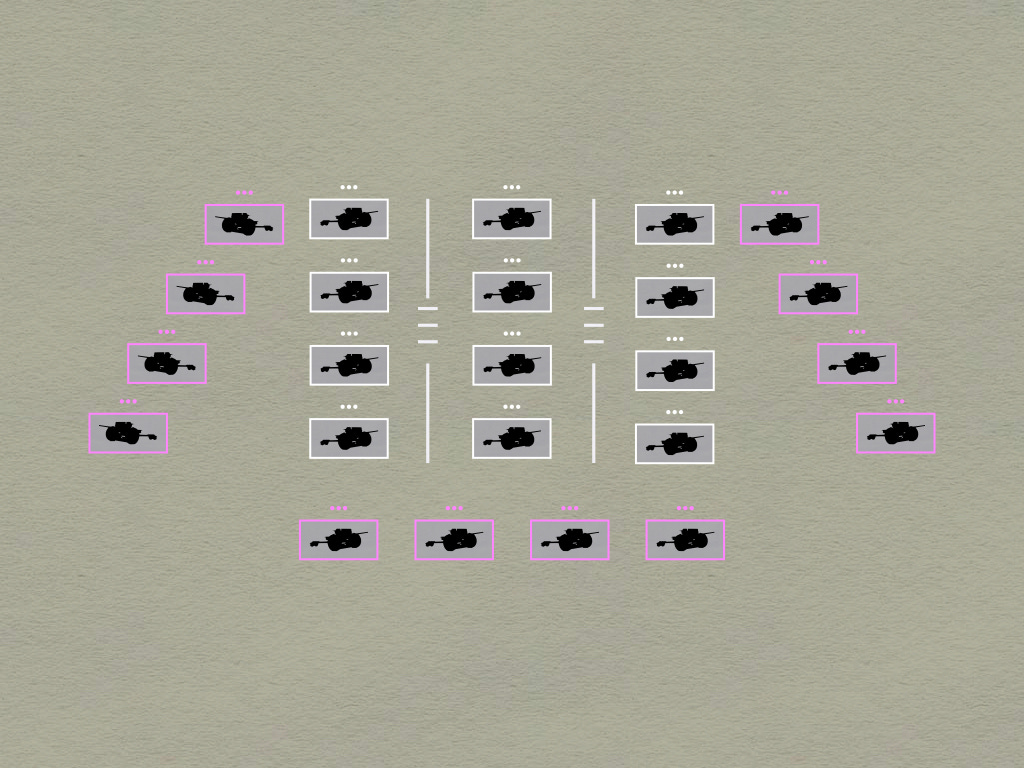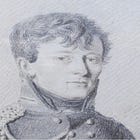
On the eve of the Second World War, Captain Albert Coady Wedemeyer of the US Army attended the Kriegsakademie in Berlin. Soon after completing, in July of 1938, the two-year course for future officers of the German General Staff, he submitted a pair of reports. The first of these provided a précis of the approach that the German Army took to tactics, leadership, and organization. The second described, in considerable detail, Captain Wedemeyer’s observations of the curriculum he had followed.
The following article provides, along with explanatory notes, a verbatim copy of a section of the second report that deals with anti-tank weapons. (Readers wishing to read complete copies of both reports can find the first in the book Wedemeyer on War and Peace and the second on the website of the Combined Arms Research Library.
37mm Anti-Tank Gun
Caliber: 37mm
Weight: 970 pounds
Maximum Range: 6,000 meters
Maximum Effective Range: 1,000 meters
Maximum Effective Rate of Fire: Fifteen rounds per minute
How Transported: Motorized (drawn by truck) On Battlefield can be drawn by crew considerable distance
Distribution: Twelve per company
Total in Infantry Division: 75
Ammunition: Armor-Piercing
Ammunition Carried: Trucks (24 rounds in gun limber) and TrainsPossessing high muzzle velocity and great mobility, at the same time presenting a poor target to the enemy (because of its low silhouette), this gun is highly effective against tanks. The Germans have perhaps given more earnest study and developed the most efficient means for Anti-Tank Defense than any country in the world. They are not yet satisfied and are still seeking ways and means to further improve their defense against the Tank.
The Anti-Tank units, organically a part of infantry regiments, battalions, or companies, contribute their fighting means to the support and protection of their respective organizations. The Anti-Tank units [battalions], organically a part of corps and divisions, constitute a reserve force, which, because of their great mobility, can be rushed to decisive areas as determined by the general situation.
The employment of a single gun is in general considered unwise, but there are exceptional missions which may justify single gun positions, such as the blocking of a very wide sector, upon a march, attaching single guns to units in the march columns, or the security of a village or specified point against hostile scout cars. It is deemed better, however, when possible to employ Half Platoons (2 guns) on such missions.1 It is considered wrong to employ single guns on the battlefield. The Germans believe that guns so used will be quickly overrun by hostile tanks.
General: The training of anti-tank units for battle requires particular emphasis upon rapidity of movement. The platoon must be so trained that upon signal it can rush to fire positions. Each man must know his role and be trained to quickly perform the duties connected with same.
Staffs, Troops, and Supply Echelons must be at all times prepared for a tank attack. Careful reconnaissance (terrestrial and air) and map study will quite accurately indicate the avenues of approach feasible for hostile tank attacks. Certain terrain features are natural obstacles of tanks and must be exploited to the fullest degree. The favorable avenues of approach must be protected by anti-tank guns, artillery, mines, and your own tanks if equipped with armor-piercing weapons.
The Anti-Tank units, organically a part of infantry regiments, [division anti-tank] battalions, or [the heavy] companies [of division reconnaissance battalions], contribute their fighting means to the support and protection of their respective organizations.2 The Anti-Tank units, organically a part of corps and divisions, constitute a reserve force, which, because of their great mobility, can be rushed to decisive areas as determined by the general situation.

Early information relative to hostile tanks permits timely and coordinated defensive measures. All reconnaissance agencies must be required to immediately report tank information to the commander to the troops specifically threatened.
Certain situations may require the attachment of additional means to anti-tank battalions such as signal, engineer, and infantry troops.
On the March:
The Regimental Anti-Tank Companies are used for the protection of their regiments against tanks and armored scout cars. The Divisional Anti-Tank Battalion is maintained as a mobile reserve, available to the Division Commander against a concerted tank attack. The Regimental anti-tank company [of an infantry regiment] marches in the regimental column, usually in short bounds.
In a regiment employed as an advance or flank guards, the four platoons of its anti-tank company are disposed as follows: one platoon has one gun with the point and the remaining two guns at the tail of the advance party: a platoon is placed at the head and another at the tail of the reserve: the 4th and last platoon marches with the motorized combat trains.
If the regiment is marching in the Main Body of the division, one platoon of the regimental anti-tank company marches at the head of the regiment, one platoon at the tail of the foot elements and two with the motorized combat trains.
The disposition of the division anti-tank battalion is dependent upon the location of the division on the march. In an interior division, the battalion marches with the motorized trains. If the division is on a flank and a strong tank attack appears at all possible, the battalion is moved out on the exposed flank, advancing by bounds, the companies leap-frogging from position to position. In this connection, the march commander, who has extensive reconnaissance and communication means at his disposal, must before the march begins arrange reconnaissance and methods of reporting (radio or messenger), to insure timely warning of a tank attack. The simultaneous employment of several warning means is recommended.
In the Development
A platoon of the regimental anti-tank companies is attached to and echeloned closely to the rear of each of the leading (assault) battalions, while the remainder of the company is held in regimental reserve. The divisional anti-tank battalion is retained under division control, but required to intensify reconnaissance for possible employment, particularly with a view to protecting the artillery positions, exposed flanks, and favorable tank approaches.
In the Attack
The platoons of the regimental anti-tank companies are in close liaison with the assault battalions. They advance by bounds from position to position, following the infantry forward echelons closely. The divisional anti-tank battalions secure the flanks and rear and are constantly alert to combat hostile counter attacks accompanied by tanks.

The Pursuit
Platoons of regimental anti-tank companies are attached to the pursuing force for local protection. The open flank of the pursuing force is secured by the Divisional Anti-Tank Battalion or parts thereof.
In Defense
The important factor in anti-tank defense as in most forms of defense, is Terrain. In rare cases only does the entire nine kilometers of a division defensive sector offer favorable tank terrain. In Europe often as much as one quarter to one half of a such a sector would possess insurmountable tank obstacles.
Therefore the regiment, whose defensive sector is secure from tank attack, is required to send its anti-tank company or part thereof, to one of the regimental sectors where such an attack is probable. If the division is defending a flank, the anti-tank defense problem is increased. Engineers with mines and demolitions, motorized machine guns, increased communication means, are sometimes given to the Anti-Tank Battalion and those combined means are located off the exposed flank in such manner, as to insure a strong and mobile barrier to a mass tank development.
Exploitation of natural obstacles, construction of obstacles and installations of tanks mines are important contributions to the defense. All obstacles must be covered by small arms and anti-tank fire.
In general, the regimental anti-tank companies should place their guns in concealed positions a few hundred yards in rear of the main line of resistance, thus providing local protection for their respective regimental sectors, while the divisional anti-tank battalion is held in reserve. There should be constant activity, however, within the battalion. Positions, echeloned in depth, are selected; routes, leading thereto, are reconnoitered; communications and warning means perfected.
These matters must be pre-arranged and provided for. There will be not time available when the hostile tanks are underway. Thorough reconnaissance, patient waiting, prompt warning, rapid occupation of position, calm and deliberate firing upon a fleeting and dangerous target, characterize the unusual demands placed upon the Anti-Tank Units.
A German solution to the preparation of anti-tank defense in a Defensive Situation follows. Assume the division is defending a sector 9,000 meters long with regiments abreast. The terrain is diversified, offering some tank obstacles, canals, thick woods, and a stream, and also offering open, rolling corridors which are excellent avenues of approach for tanks.
Reconnaissance and map study are made to determine two important locations along the front, one the Engineer Main Effort (Pionier Schwerpunkt) and the other the Anti-Tank Gun Main Effort (Panzer Abwehrgeschütz Schwerpunkt). The terrain is diversified, offering some tank obstacles, canals, thick woods, and a stream, and also offering open, rolling corridors which are excellent avenues of approach for tanks.
The Engineer point of main effort is located in that section of the front, where natural obstacles contribute defensive strength. The engineer troops improve and expand the natural defensive features found in this section.
The Anti-Tank Gun point of main effort is located in that section of the front where the ground is open and rolling, ideal conformation for tank operations. Across this avenue of approach, the anti-tank guns are located, those of the regiment in concealed positions, two to four hundred meters in rear of the Main Line of Resistance and the anti-tank battalion further to the rear, with gun positions echeloned in depth. The battalion gun positions are selected and routes leading thereto carefully reconnoitered, but they usually are not occupied until the warning of a hostile tank attack is received. They remain under cover, in positions of readiness, conveniently located to permit rapid movement to any threatened area.
In Delaying Action
The Regimental Anti-Tank units are usually attached to infantry groups along the line of defense. They prevent a break-through by hostile armored cars or tanks and block points along the roads running through the position.
The Divisional Anti-Tank Battalion, remaining under division control, must reconnoiter and prepare positions in the next delaying position and must always maintain a reserve available for the division commander’s immediate use.
For Further Reading:
A two-piece half-platoon [Halb-Zug] employed two-thirds of the guns of a standard three-piece platoon. I suspect, however, that German soldiers used the term, which they also used to describe elements smaller than a platoon but larger than a squad, so that they might avoid the awkwardness inherent in Zweidrittel-Zug [‘two-thirds of a platoon’].
The colors on the tactical symbols match the ‘arm of service’ colors [Waffenfarben] of the branch to which each type of unit belongs. Thus, the anti-tank platoon of the division reconnaissance battalion sports the lemon-yellow piping of the cavalry, the platoons of the division anti-tank battalions the pink of the motorized combat troops, and the platoons of the regimental anti-tank companies the white of the infantry.










Fascinating bit of history. Thanks!
Interesting throughout. I wonder if this part of the report, and Wedemeyer’s subsequent articles in the Infantry Journal and Field Artillery Journal is where GEN Marshall, LTG McNair and LTC Bruce came up with the terrible idea of the Tank Destroyer Force?